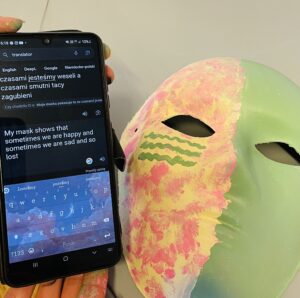By Dr. Mary C. McCluskey, LCSW
The news inundates us with stories of traumatic events happening all over the world. No matter how we try to shield our children, they are bound to learn things that are upsetting and scary. When a child (or adult) is exposed to or even hears about traumatic/frightening events, it can be overwhelming. Reactions will vary depending on different factors (past traumas, temperament, availability of support systems etc.). A definition I find to be very useful follows: “Trauma occurs when both internal and external resources are inadequate to cope with an external threat.” van der Kolk (1989)
Dr. Pierre Janet (the original founder of trauma theory and the main character in my latest children’s book) felt that we could only get over a trauma by verbally expressing, or speaking about–what has happened to ourselves as well as to others. Only then would the traumatic/frightening event find “Its place as one of the chapters in our personal history” (1925, p. 662). He believed when a trauma became a personal story, and especially a story that is believed by another person, the trauma will no longer have the same power to cause distress.
We now know that some children (and adults too) need to first express themselves through non-verbal means like art, yoga, dance, and music. Trauma is understood to be stored or frozen in the right side of the brain, so we don’t always have access to speak about it. Using the right side of the brain (the emotional and creative, non-verbal side) can help unfreeze the trauma at a safer pace. If the trauma is not addressed, it wreaks havoc on the nervous system and creates many painful symptoms. Optimally, at some point, both sides of the brain will be integrated. The left side of the brain is more practical, analytical, and verbal. When both sides are balanced, mental wellness is more likely.
Pierre Janet believed the family played a critical role in the treatment and healing of an individual. He also believed in the healing power of time: “Time is a master craftsman” (Janet, 1925, p. 675). This is something important to keep in mind – try to be patient with both yourself and your child. Healing always takes time and self-compassion.
Children need the resources that only adults can provide. How do you know if your child is being affected by scary events? There are signs and symptoms to look for. Some children become withdrawn, others combative, and many will have difficulty concentrating or regulating their emotions. Others will develop physical symptoms such as stomachaches or headaches. Some kids will have recurrent nightmares, and some may begin wetting the bed long after this behavior had already stopped. No matter what the symptom, these reactions are often considered a child experiencing an adverse event.
These symptoms mean closer attention is needed to what might be going on in your child’s world. Significant changes in a child’s personality could indicate that something has happened that they are not equipped to process or handle. This might include hearing about something traumatic. If your child’s symptoms persist, seek professional help but as a parent it is important to know that a child’s change in behavior indicates they need, more than ever, your full attention, unconditional love, and explicit support. Spending more time with them could be all that they need. Engaging in activities that don’t involve screens is a great way to connect and learn what’s going on.
Recently I led an art workshop in Poland for Ukrainian children who had read my book about coping with trauma. They painted masks while listening to piano music by Chopin. I did not ask them to share the meaning of their masks but some spontaneously did so using google-translate. It seemed important for them to share what they were feeling.The mask-making activity seemed to be a safe way for them to get in touch with those feelings while also bonding with their peers. Mask-making can be fun and healing at the same time. It could also be a great activity for the whole family, and a new, fun way to bond.

